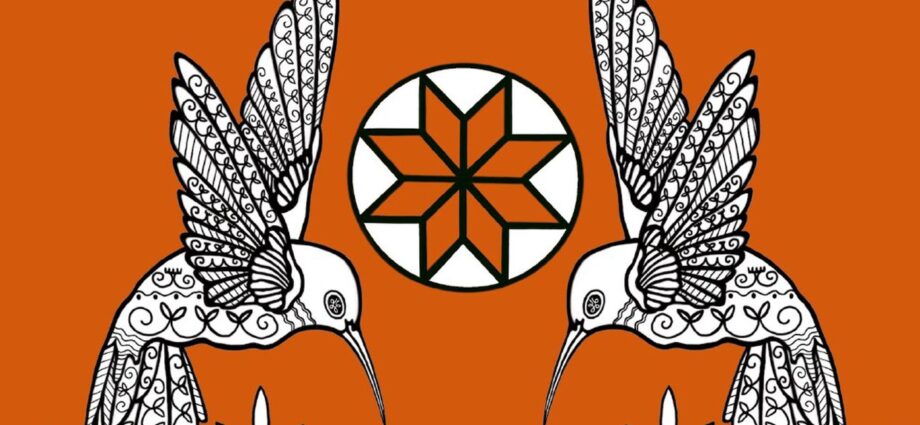
By Peter Jackson, Local Journalism Initiative Reporter, The Telegram
September 30, 2023
Saturday, Sept. 30, is the National Day for Truth and Reconciliation, as well as Orange Shirt Day. You may be wondering how this federal statutory holiday came about and what it means for you and your family. The Telegram enlisted the help of Heidi Dixon, manager of operations at First Light (formerly the native friendship centre) in St. John’s, and Justin Campbell, director of research for the urban Indigenous advocacy coalition First Voice, to explain what the day signifies and what you can do on a local level.
What public events are happening today?
The holiday is meant to be a time for sober reflection, but a rally will take place at the Colonial Building in St. John’s at 2:45 p.m. You can expect to hear a number of speeches, and attendees are also welcome to take part in rituals such as offering up prayers by burning of tobacco ties in a fire, and a smudging ceremony. An Inuit lantern called a qulliq will also be lit. A private event only for survivors and others more directly affected by the residential school system is being held earlier in the day.
What is truth and reconciliation?
Canada’s Truth and Reconciliation Commission (TRC) was formed in 2007 as part of a settlement with First Nations survivors of the residential school system in the country. The commission received $72 million in funding over eight years to gather documentation and witness testimony, releasing a final report in 2015 that included 94 calls to action. One of those was to establish a national holiday.
Is it modelled after the South African process that addressed the legacy of Apartheid?
Nelson Mandela and Archbishop Desmond Tutu authorized the Truth and Reconciliation Commission in 1996 to chronicle the atrocities committed against black South Africans under Apartheid. The main difference in that country is those who committed crimes had to co-operate completely and give testimony in order to be granted amnesty. There was no criminal component to Canada’s TRC.
Why the focus on residential schools in particular?
Residential schools left a long legacy of intergenerational trauma, even though the last one closed in 1996. Documents and witness testimony have established that more than 4,000 Indigenous children died in the school system over the span of a century, although many believe the number is much higher. The recent discovery of what are believed to be hundreds of unmarked graves has added an even starker sense of immediacy to that legacy.
“Residential schools were conceived of as a way to destroy and exterminate Indigenous cultures in this country,” Campbell said.
Why orange shirts?
Sept. 30 was chosen for National Day for Truth and Reconciliation in 2021 because it had already been established by a grassroots lobby as Orange Shirt Day in 2013. The orange shirt symbolizes the story of a residential school survivor in British Columbia named Phyllis Webstad, who had all her accoutrements taken from her on arrival at the school, including an orange shirt that her grandmother had given to her.
How can we prioritize 94 calls to action?
If 94 calls to action seem like a lot, keep in mind there are also 213 calls for justice contained in the 2019 Missing and Murdered Indigenous Women and Girls (MMIWG) report, not to mention the minimum standard of Indigenous rights contained in United Nations Declaration on the Rights of Indigenous Persons (UNDRIP), which Canada only endorsed in 2021 after initially rejecting it. When First Voice was founded in 2019, one of its first projects was to establish what elements of the TRC should be implemented by provincial and municipal governments and businesses, and they came up with 42. They can be found on their website at firstvoicenl.ca.
What are some of those local priorities?
The first action listed among the 42 is a change in the provincial curriculum to reflect Indigenous culture and history, including an understanding of the damage caused by colonial policies.
“That’s not something that can happen overnight,” Campbell said.
Another priority is the formation of a police oversight body that includes Indigenous membership. That proposal was spelled out in a detailed report released by First Voice last year. Even though a formal poll showed 90 per cent of the public approved of such a measure, there’s been no hint of movement on the part of the government.
“It’s frustrating that there isn’t any transparency with respect to what may be happening with government on those recommendations,” Campbell said.
What can I do to help?
Campbell suggests people read those 42 local calls for change and then make a conscious decision to help, while making sure Indigenous people lead the way.
“Ask yourself who in your life are you able to influence to help advance these calls for change.”
I’m proud to be Canadian. Why should I harp on this negative past?
As with many marginalized groups, Indigenous advocates admit they receive an uncomfortable degree of pushback from people who don’t want to admit the truth or feel it infringes on their patriotism. Campbell says education will be key to combatting misinformation. But even those who embrace the truth may feel a sense of despair.
“I think people are afraid of, well, where do we go from there? How can we possibly reconcile with something that dark,” he said.
History is complex, he says.
“The way to be proud of your country is to make sure that it includes everyone, to make sure that we’ve actually grappled with the really hard things in our past, that we’ve actually done the hard work to address the way that that past continues to affect the present.”
Subscribe to our newsletter.

